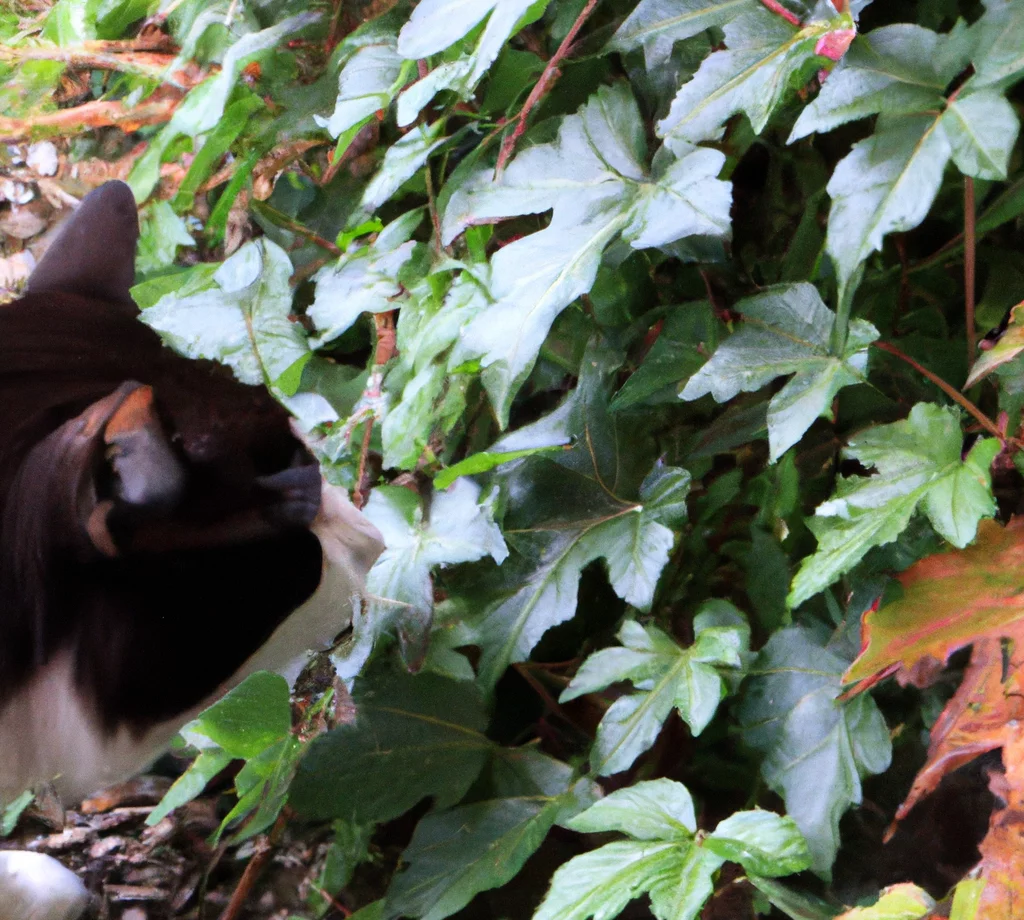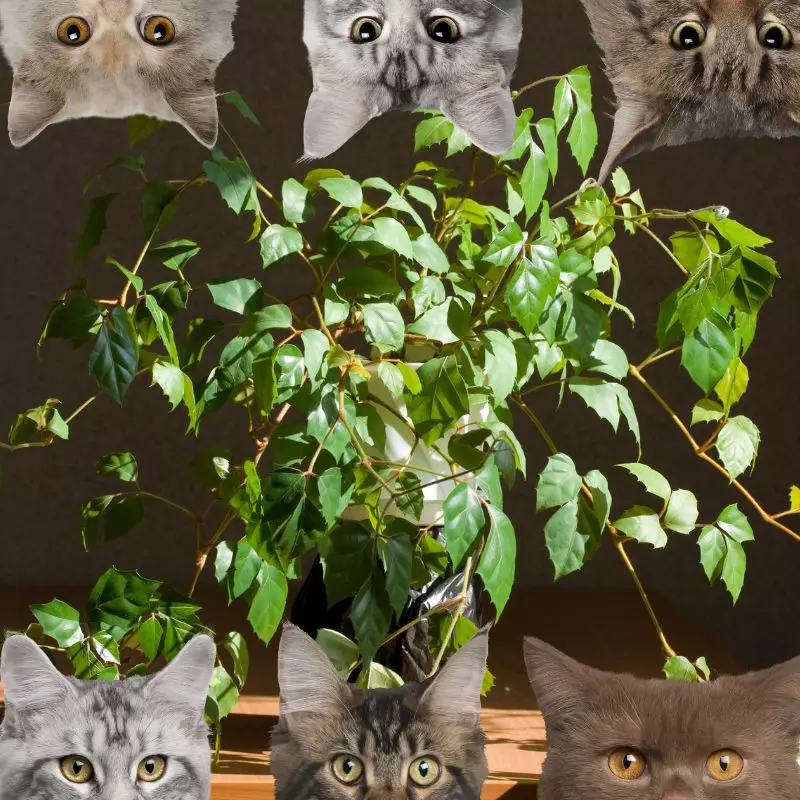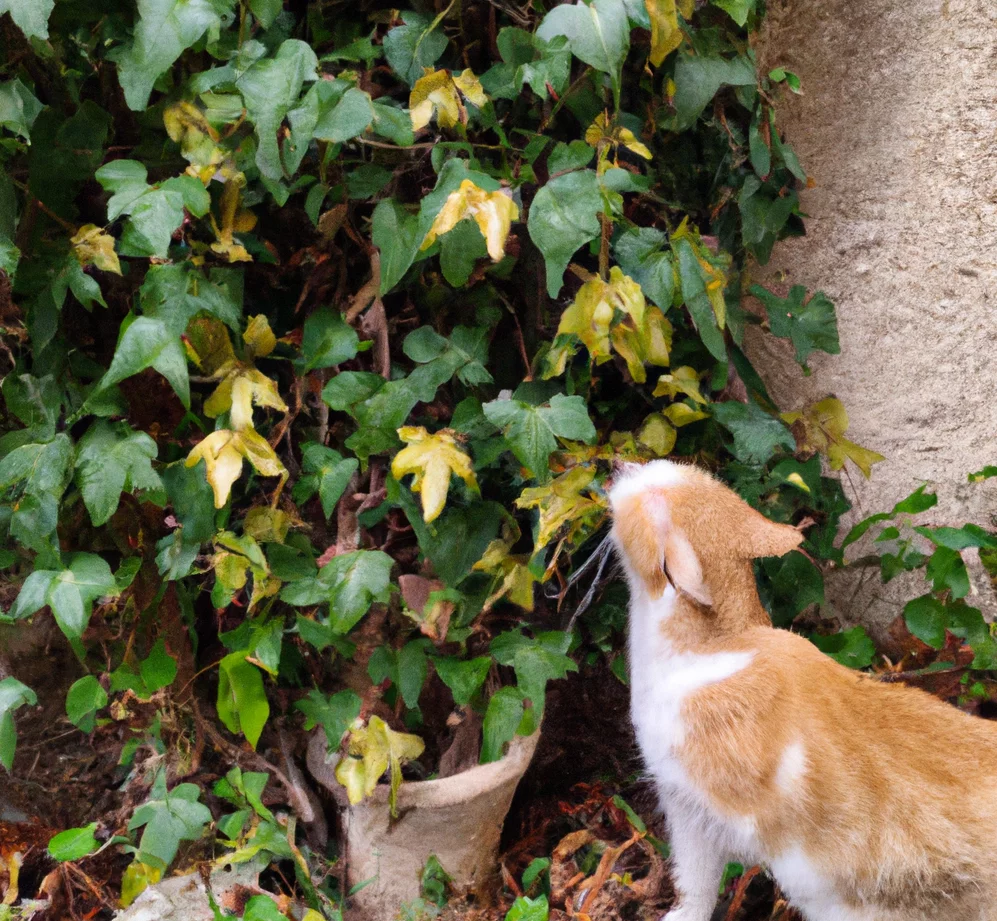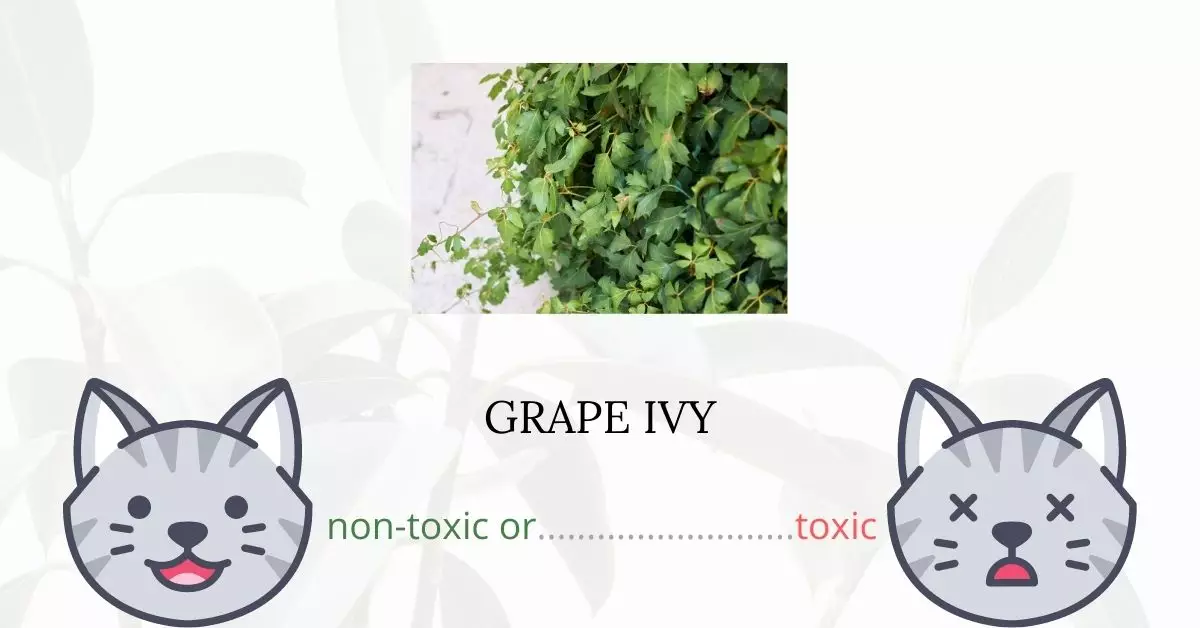Grape Ivy is not toxic to cats. In fact, it has been listed on the American Society for the Prevention of Cruelty to Animals (ASPCA) as a non-toxic plant for cats, dogs, and horses.
This article was crafted in close collaboration with a team of experienced DVMs (doctors of veterinary medicine). Their expert contributions, combined with our extensive research on high-authority websites such as ASPCA and PetMD, ensure that we offer accurate and up-to-date information on the potential risks associated with various plants, with a focus on Grape Ivy in this instance.
While Grape Ivy is generally safe for cats, it is still advisable for cat owners to be cautious and prevent their feline friends from consuming excessive amounts of any plant.
Can Cats Eat Grape Ivy?

It should not bother you if your cat has accidentally eaten a piece of grape ivy. Since the plant is non-toxic, it will not cause any life-threatening consequences to your cat.
However, eating too much grape ivy can cause indigestion and gastrointestinal problems in cats. Cats lack enzymes that can digest plants properly. Therefore, they tend to vomit or experience diarrhea when they have eaten too many plants. Once they have ejected the plant materials, the symptoms will eventually subside.
Another rule of thumb to follow if you have both plants and cats at home is to use fertilizers and insecticides with caution. These plant-care products may include dangerous ingredients that are toxic to cats. Use only natural products on your plants as much as possible.
What is Grape Ivy?

Grape ivy is a popular indoor houseplant that thrives in a hanging basket or on a trellis. It is previously known scientifically as Cissus rhombifolia and is now known as Cissus alata. Grape Leaf Ivy, Oak Leaf Ivy, and Venezuela treebine are all common names for this plant.
Cissus alata is not a true ivy. It is, however, a member of the Vitus (Vitaceae) family, as are grapes. The leaves are similar to grape or oak leaves, thus the common names. In the spring, it produces fuzzy green flower clusters about two inches long, followed by blue-black berries in the summer.
Grape ivy is one of the easiest plants to grow. Whether ignored or continuously tended for, it grows fast. It is also incredibly adaptable in terms of light and temperature. This plant is endemic to the New World Tropics, including Mexico, Bolivia, Venezuela, Trinidad, and Guyana.
Keeping Cats Away From Grape Ivy

Using natural deterrents is one way to keep your cats away from your grape ivy and other plants. If there are plenty of plants that grow near your residence, you may also try limiting your cat’s access outdoors to limit the chances of exposure to plants.
The key method to prevent your feline companions from touching your plants is to train them. You can start training them by saying “no” loudly when they try to approach your plants. You can also make loud noises or spray water on them as a way of discipline.
Make sure though that your cat will associate the water with your plants and not on you. Otherwise, your cat will avoid you instead of the plants.
Plants to Avoid For Your Cats
If you are a cat owner and unsure if the plants growing in your yard are harmful to your cats, check out this list of toxic plants for cats. You can also check our list of non-toxic plants for cats.





